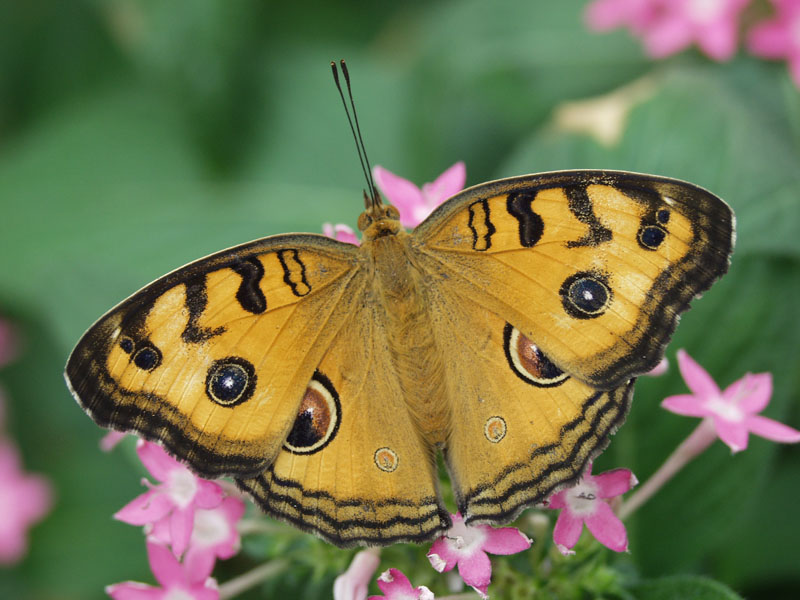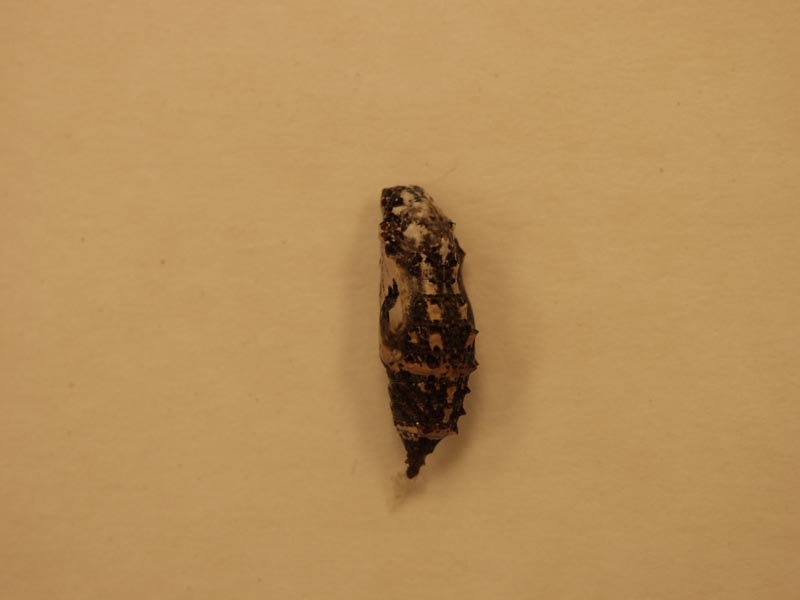


The adults will nectar from a variety of flowers but they really seem to enjoy Lantana.
The origin of Junonia is currently unknown. The specie almana is currently unknown.
The Peacock Pansy is commonly found in low lying areas visiting gardens, the open country side, areas surrounding rice fields and road sides.
Males are believed to be territorial so they patrol their range waiting for females as they pass through. After mating the female searches for a host plant and then proceeds to lay several eggs per plant. After the caterpillars hatch from their eggs they feed on the host plant until they form their chrysalis.
Adults can be found flying almost all year round with the largest population and range between the months of April - October. The population seems to reach the highest numbers during the monsoon season.
While the adult males and females are very similar in color, shape and pattern, this butterfly actually exhibits a great deal of seasonal variation. There is such a difference between the wet season and dry season varieties that they were originally believed to be two separate species.